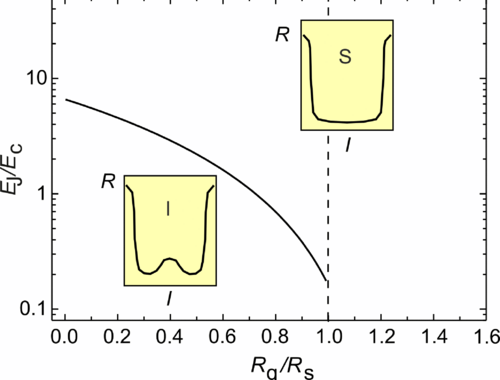
Comment on “Absence of a Dissipative Quantum Phase Transition in Josephson Junctions”
Authors: Pertti J. Hakonen and Edouard B. Sonin
Physical Review X 11, 018001 (2021)
Abstract: Recently, Murani et al. [1] questioned the existence of the dissipative quantum phase transition (DQPT) in a single Josephson junction (JJ) predicted nearly 40 years ago [2,3]. This conclusion is based on misperception of the principles underlying the DQPT theory.
First, we recall in a nutshell the basics of the DQPT theory. The DQPT is a joint effect of Coulomb interaction, dissipation, and quantum mechanics. The Coulomb blockade makes the JJ an insulator at small bias. However, it is effective only if the Coulomb energy EC∼e2/C exceeds the quantum-mechanical uncertainty ℏ/τ, where τ=RsC is the time of the charge relaxation in the circuit. Here, C is the capacitance of the JJ, and Rs is the shunt resistance. The condition EC∼ℏ/τ agrees with the condition Rs=Rq, where the DQPT was predicted [2,3] (the dashed line in Fig. 1). Here, Rq=h/4e2 is the quantum resistance. The existence of the DQPT has been supported by experimental work [4–9], and possible applications for qubits have been discussed [10].
